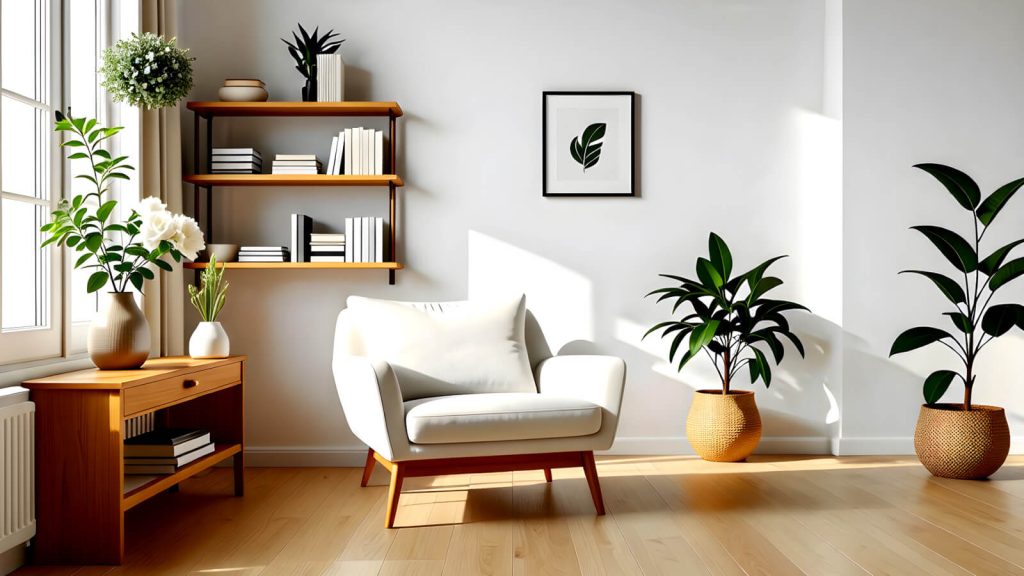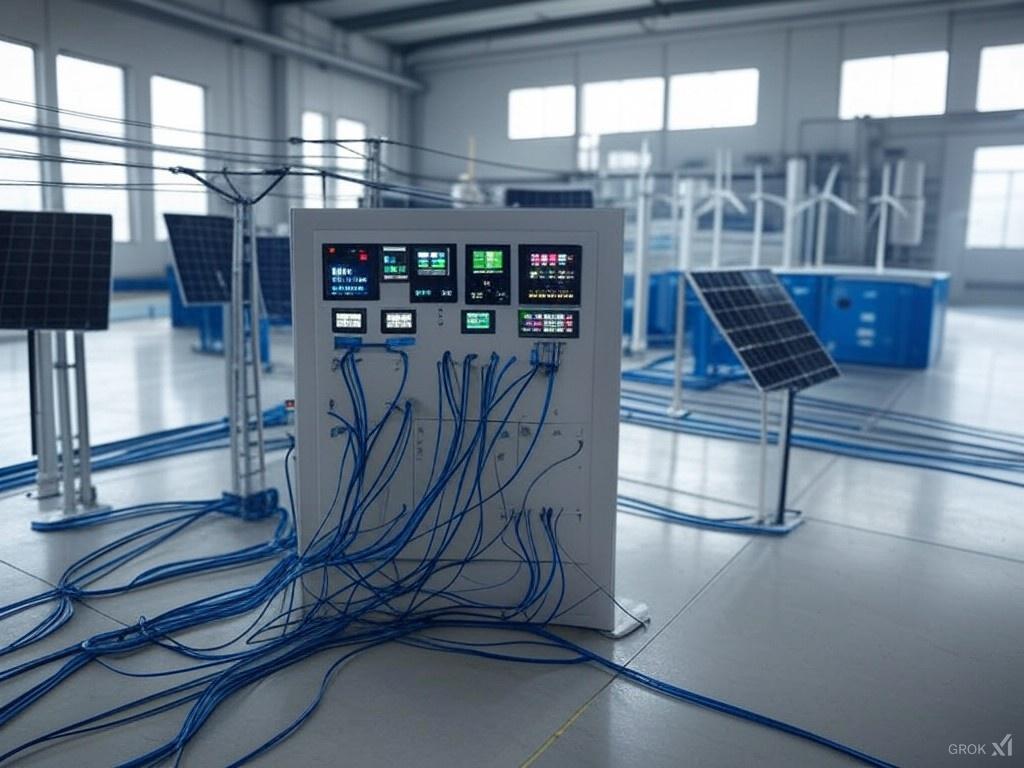In an era where 1 in 5 adults experiences mental illness each year [^1], the search for effective coping strategies has never been more crucial. Amidst this landscape, an unexpected ally has emerged in the battle for mental wellness: minimalism. Far from being just another lifestyle trend, minimalism for mental health is gaining recognition as a powerful tool for combating stress, anxiety, and the overwhelming nature of modern life.
Table of contents
- Understanding Minimalism for Mental Health
- The Hidden Emotional Burdens of Clutter
- Mindful Consumption: Redefining Our Relationship with Possessions
- Digital Minimalism: Navigating Mental Wellness in the Information Age
- Essentialism in Daily Life: Practical Applications for Mental Health
- Overcoming Challenges in Adopting Minimalism for Mental Wellness
Understanding Minimalism for Mental Health
Beyond Decluttering: The Psychology of Less
When we think of minimalism, images of sparse living rooms and capsule wardrobes often come to mind. However, the true power of minimalism lies not in the aesthetic, but in its psychological impact. Dr. Elizabeth Dunn, a psychology professor at the University of British Columbia, suggests that “the benefits of simplicity may stem from the way it shifts our attention and alters our perception of time” [^2].
Cognitive Load Reduction: Freeing Mental Resources
One of the most significant, yet often overlooked, benefits of minimalism is its ability to reduce cognitive load. Every item in our environment, physical or digital, demands a small piece of our attention. By reducing these demands, minimalism frees up mental resources for more important tasks and experiences. Dr. Daniel Levitin, neuroscientist and author of “The Organized Mind,” explains, “Every time you see something you own, your brain has to process whether it needs to do something about it” [^3]. By reducing the number of items we own, we’re effectively reducing the number of decisions our brain needs to make, leading to decreased mental fatigue and increased focus.
The Neuroscience of Simplicity and Well-being
Recent neuroscientific research has begun to uncover the biological basis for the mental health benefits of minimalism. A study published in the Journal of Neuroscience found that cluttered environments can actually impair our ability to focus and process information [^4]. The researchers observed increased activity in the visual cortex when participants were exposed to cluttered scenes, suggesting that excess stimuli compete for our neural representation.Moreover, practicing minimalism has been linked to increased activity in the prefrontal cortex, the area of the brain associated with decision-making and emotional regulation. This suggests that adopting a minimalist lifestyle may enhance our ability to manage stress and regulate our emotions more effectively.
The Hidden Emotional Burdens of Clutter
Emotional Clutter: Identifying and Addressing Non-Physical Excess
While physical clutter is visible and tangible, emotional clutter can be just as burdensome, if not more so. Emotional clutter refers to the mental baggage we carry – unresolved conflicts, lingering regrets, and unfulfilled obligations. These psychological impediments can weigh heavily on our mental health, creating a constant undercurrent of stress and anxiety. Dr. Robin Zasio, a clinical psychologist specializing in anxiety disorders, notes, “Emotional clutter can be just as debilitating as physical clutter. It occupies mental space and energy, preventing us from fully engaging in the present moment [^5].
The Stress-Clutter Cycle: Breaking Free from Overwhelm
The relationship between stress and clutter is often cyclical. Stress can lead to accumulation of clutter as we lack the energy or motivation to keep our spaces organized. Conversely, clutter itself can be a significant source of stress. A study published in the Personality and Social Psychology Bulletin found that individuals who described their home environments as cluttered had higher levels of cortisol, the stress hormone, throughout the day [^6]. Breaking this cycle requires a two-pronged approach: addressing the underlying stressors and systematically reducing clutter. Minimalism offers a framework for both, encouraging us to identify what truly matters and eliminate the rest.
Case Study: Transformative Effects of Minimalism on Anxiety Disorders
Sarah Thompson, a 32-year-old marketing executive, had been struggling with generalized anxiety disorder for years. Traditional therapies provided some relief, but it wasn’t until she embraced minimalism that she experienced a significant breakthrough. “I never realized how much my cluttered environment was contributing to my anxiety,” Sarah shares. “As I began to declutter my space and simplify my life, I noticed a marked decrease in my anxiety symptoms. My mind felt clearer, and I was better able to manage my worries.”Sarah’s experience is not unique. A study conducted at UCLA found that women who described their homes as “cluttered” or full of “unfinished projects” were more likely to have depressed mood and fatigue [^7]. By contrast, those who described their homes as “restful” and “restorative” had lower levels of the stress hormone cortisol.
Mindful Consumption: Redefining Our Relationship with Possessions
The Psychology of Ownership and Its Impact on Mental Health
Our relationship with our possessions is complex and deeply psychological. The “endowment effect,” a cognitive bias where we overvalue things simply because we own them, can lead to accumulation of unnecessary items and difficulty in letting go [^8]. Minimalism challenges this psychological attachment, encouraging us to critically examine our possessions and their true value in our lives. By doing so, we can break free from the mental burden of excessive ownership and find greater contentment with less.
Cultivating Gratitude Through Intentional Living
One of the most powerful aspects of minimalism is its ability to foster gratitude. When we carefully curate our possessions and experiences, we’re more likely to appreciate what we have. This shift in perspective can have profound effects on our mental well-being. A study published in the Journal of Positive Psychology found that gratitude is strongly correlated with greater life satisfaction and psychological well-being [^9]. By embracing minimalism, we create more opportunities to practice gratitude, enhancing our overall mental health.
Minimalism as a Counterculture: Challenging Consumerism for Well-being
In a society driven by consumerism, choosing minimalism can be seen as a radical act. It challenges the notion that more is always better and encourages us to find fulfillment beyond material possessions. Dr. Tim Kasser, author of “The High Price of Materialism,” argues that “People who are highly focused on materialistic values have lower personal well-being and psychological health than those who believe that materialistic pursuits are relatively unimportant [^10]. By rejecting excessive consumerism, minimalism offers a path to greater mental wellness and life satisfaction.
Digital Minimalism: Navigating Mental Wellness in the Information Age
The Cognitive Costs of Digital Clutter
Digital clutter can be just as detrimental to our mental health as physical clutter. Constant notifications, endless social media feeds, and overflowing inboxes create a state of continuous partial attention, leaving us feeling scattered and overwhelmed. Cal Newport, author of “Digital Minimalism,” argues that this digital overload can lead to anxiety, decreased productivity, and reduced ability to engage in deep thought [^11]. By applying minimalist principles to our digital lives, we can reclaim our attention and improve our mental well-being.
Strategies for Effective Digital Detox
Implementing a digital detox doesn’t mean completely disconnecting from technology. Instead, it involves consciously curating our digital environment to support our mental health. Some effective strategies include: 1. Establishing tech-free zones or times in your home 2. Turning off non-essential notifications 3. Regularly decluttering digital files and inboxes 4. Practicing mindful consumption of social media and news
Balancing Connectivity and Mental Space in the Workplace
For many professionals, constant connectivity is seen as a necessity. However, this always-on mentality can lead to burnout and decreased productivity. A study by the American Psychological Association found that workers who were expected to check email after hours experienced higher levels of stress and lower well-being [^12]. Implementing minimalist principles in the workplace, such as setting clear boundaries for email communication and creating distraction-free work periods, can lead to improved focus, reduced stress, and better overall mental health.
Essentialism in Daily Life: Practical Applications for Mental Health
Minimalist Self-Care: Quality Over Quantity
In the realm of self-care, minimalism encourages us to focus on quality over quantity. Instead of accumulating countless self-care products or activities, minimalist self-care involves identifying what truly nourishes our mental and emotional well-being. Dr. Kristin Neff, a pioneer in self-compassion research, suggests that “Sometimes, the kindest thing we can do for ourselves is to simplify our lives and reduce the pressure we put on ourselves” [^13]. This might involve prioritizing adequate sleep, engaging in regular physical activity, or practicing mindfulness meditation.
Simplifying Decision-Making Processes
Decision fatigue is a real phenomenon that can significantly impact our mental health. By applying minimalist principles to our decision-making processes, we can reduce this cognitive burden.Techniques such as creating a capsule wardrobe, meal planning, or establishing routines for recurring decisions can free up mental energy for more important choices. This not only reduces stress but also improves the quality of our decisions.
Creating Mindful Spaces: The Impact of Physical Environment on Mental State
Our physical environment has a profound impact on our mental state. A study published in the Journal of Environmental Psychology found that cluttered home environments increased cortisol levels, a physiological marker of stress [^14].Creating mindful, minimalist spaces involves more than just decluttering. It’s about intentionally designing our environment to support our mental well-being. This might include incorporating elements of nature, optimizing lighting, or creating dedicated spaces for relaxation and reflection.
Overcoming Challenges in Adopting Minimalism for Mental Wellness
Addressing Common Misconceptions and Resistances
Despite its potential benefits, minimalism often faces resistance. Common misconceptions include the belief that minimalism requires getting rid of everything or living an austere lifestyle. In reality, minimalism is about intentionality and focusing on what adds value to our lives. It’s important to recognize that the journey towards minimalism is personal and doesn’t have a one-size-fits-all approach. The goal is to find a balance that supports our mental health and aligns with our individual values and needs.
Tailoring Minimalist Approaches to Individual Needs and Values
Minimalism is not about adhering to strict rules but about finding what works best for each individual. For some, this might mean dramatically reducing possessions, while for others, it could involve simplifying schedules or digital habits.Dr. Christine Koh, author of “Minimalist Parenting,” emphasizes the importance of aligning minimalist practices with personal values: “The key is to identify what’s truly important to you and your family, and then create systems and habits that support those priorities [^15].
Sustainable Habits: Maintaining Minimalism for Long-term Mental Health Benefits
Adopting minimalism is not a one-time event but an ongoing process. To maintain the mental health benefits of minimalism over the long term, it’s crucial to develop sustainable habits. This might involve regular decluttering sessions, mindful purchasing practices, or periodic reassessment of priorities. Dr. Laurie Santos, professor of psychology at Yale University and teacher of the popular “Science of Well-Being” course, suggests that “Small, consistent changes are often more effective and sustainable than dramatic overhauls [^16]. By integrating minimalist principles into our daily routines, we can create lasting positive changes in our mental well-being.
Conclusion
The therapeutic power of less extends far beyond the visible aspects of decluttering and simplifying our physical spaces. By embracing minimalism, we can reduce cognitive load, break free from the stress-clutter cycle, cultivate gratitude, and create environments that support our mental well-being.
As we navigate the complexities of modern life, minimalism offers a powerful tool for enhancing mental health. It encourages us to focus on what truly matters, freeing us from the burden of excess and allowing us to live more intentionally. While minimalism should not be seen as a replacement for professional mental health care when needed, it can serve as a valuable complement to traditional approaches.
By simplifying our external world, we create space for inner growth, resilience, and lasting well-being.As you consider incorporating minimalist principles into your life, remember that the journey is personal and unique. Start small, be patient with yourself, and focus on the aspects of minimalism that resonate most with you. In doing so, you may discover that in the realm of mental wellness, less truly can be more.
References
[^1]: National Alliance on Mental Illness. (2021). Mental Health By the Numbers.
[^2]: Dunn, E., & Norton, M. (2013). Happy Money: The Science of Happier Spending. Simon & Schuster.
[^3]: Levitin, D. J. (2014). The Organized Mind: Thinking Straight in the Age of Information Overload. Dutton.
[^4]: McMains, S., & Kastner, S. (2011). Interactions of Top-Down and Bottom-Up Mechanisms in Human Visual Cortex. Journal of Neuroscience, 31(2), 587-597.
[^5]: Zasio, R. (2011). The Hoarder in You: How to Live a Happier, Healthier, Uncluttered Life. Rodale Books.
[^6]: Saxbe, D. E., & Repetti, R. (2010). No Place Like Home: Home Tours Correlate With Daily Patterns of Mood and Cortisol. Personality and Social Psychology Bulletin, 36(1), 71-81.
[^7]: Arnold, J. E., et al. (2012). Life at Home in the Twenty-First Century: 32 Families Open Their Doors. Cotsen Institute of Archaeology Press.
[^8]: Kahneman, D., Knetsch, J. L., & Thaler, R. H. (1991). Anomalies: The Endowment Effect, Loss Aversion, and Status Quo Bias. Journal of Economic Perspectives, 5(1), 193-206.
[^9]: Wood, A. M., Froh, J. J., & Geraghty, A. W. (2010). Gratitude and well-being: A review and theoretical integration. Clinical Psychology Review, 30(7), 890-905.
[^10]: Kasser, T. (2002). The High Price of Materialism. MIT Press.
[^11]: Newport, C. (2019). Digital Minimalism: Choosing a Focused Life in a Noisy World. Portfolio.
[^13]: Neff, K. (2011). Self-Compassion: The Proven Power of Being Kind to Yourself. William Morrow.
[^14]: Roster, C. A., Ferrari, J. R., & Jurkat, M. P. (2016). The dark side of home: Assessing possession ‘clutter’ on subjective well-being. Journal of Environmental Psychology, 46, 32-41.
[^15]: Koh, C., & Dornfest, A. (2013). Minimalist Parenting: Enjoy Modern Family Life More by Doing Less. Bibliomotion.
[^16]: Santos, L. (2018). Psychology and the Good Life. Yale University.










